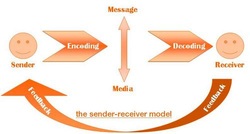Strength
Weakness
Opportunity
Threats
- Samsung enjoys the widest range of product portfolio which includes Mobile phone, Tablet, TV/Audio/Video, Camera, camcorder, Home appliance, pc, peripherals, printer, memory cards and other accessories
- Samsung holds significant market share in most of the product categories
- Samsung is NO.2 in terms of market share in mobiles, it captured Nokia’s market share by superior innovation in smart phones
- Samsungs is the best in terms of design features and technology. It was the first to introduced dual screen mobiles , 65k TFT/LCD colour phone, first phone with polyphonic ringtones, phones with rotating lens, thinnest and lightest note pad etc
- Samsung enjoys the first mover advantage in terms of introducing advance features in LCD, refrigerator, Air conditioner etc. It introduced the world’s smallest MP3 player and India’s first 17” TFT-LCD-TV monitor.
- Samsung took advantage of the growing economy of Asian market by setting up manufacturing plant in India there by reducing logistics and supply chain costs.
- Samsung brand value increased by 80% in past three years
Weakness
- Samsung Mobile launched a series of Smart phones recently which led tocannibalization
- The demand for LCD panels is expected to decline in the future
- Still Nokia is considered to be the most preferred product in India in terms of ease of use, reliability and resale value
- Chinese products focus on economies of scale and dump into Indian market for lesser cost. This results in reduction of sales
- Samsung is a hardware leader but has too much of dependence for software from other parties.
- Online stores which sell a wide range of products are giving better deals as they don’t incur cost in distribution channel
Opportunity
- Samsung is planning to make the air-condition product category more strong with unique technology called ‘Triple protection proposition’
- Samsung is the India’s official ‘Olympic partner’ for the 2012 London Olympic and recently launched ‘Olympic Ratna Program’. This will result enhance brand awareness and increase the sales
- Samsung Mobile and Home appliance has future plans of launching Customized products for Indian market. This will improve the market share in rural market
- The Indian youth population is growing and mobile phone sales is expected to increase due to lesser call rates
- Its financial position is strong and there is a scope of entering into unrelated diversification
Threats
- Samsung has wide variety of product lines, failure of one product line will have impact on the other and will result in brand dilution
- The competitors like Nokia are focused focussed only in one segment
- Since India is a potential market, entry of foreign players is likely high. Foreign players like Haier have already started gaining market share in India in home appliances.
- Threats from Chinese products
- Retail Chains like Bigbazaar sell consumer electronics and home appliance in low cost strategy which are procured in bulks from foreign market

 RSS Feed
RSS Feed